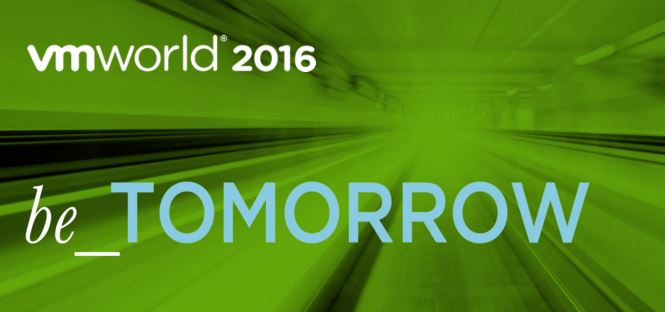
VMworld Barcelona 2016 is finally here!
How we – the ones who didn’t make it to VMworld Las Vegas – have all been counting down to this marvelous week in Spain where the weather at the time of writing this article is much better than in Belgium where a grey sky and sizzling temperatures of about 8 degrees Celsius keep me comfort (cough – cough).
We did receive a lot of great news from the VMworld Las Vegas conference. For instance, it is obvious now that VSAN is here to stay and is very quickly becoming the number one for hyper converged infrastructure. Where I had doubt about the solution capabilities of VSAN 5.5 these doubts have started fading rapidly with the introduction of VSAN 6.2. On the networking side of things, VMware’s NSX although still vastly too expensive for most of the European companies has taken high ground and has become the biggest thing for VMware since the introduction of vSphere.
But to me the two most important things which have been introduced at VMworld Las Vegas have been VMware Cloud Foundation and the partnership with IBM. Some of that news undoubtedly left some of us wondering and wanting more information.
Take note that this blog post comes in multiple parts.
This post is part of a VMWorld Barcelona early access series:
What is new with VMware?
What is new in vSphere 6.5?
What is new in vSphere 6.5 HA/DRS and VSAN 6.5?
What is new in vSphere 6.5 Security?
What is new for Photon 1.1?
VMware Cloud Foundation which is build on VSAN 6.2 , NSX 6.2.x and vSphere 6.x is VMware’s newest suite and new flagship product which should make moving to a hybrid cloud easier. IBM did become the first vCAN partner offering VMware Cloud Foundation. There is no doubt that this offering probably is great for many customers but personally I would prefer to move my workloads to the cloud of a bigger provider, a provider with a bigger geographical and technical reach and which can provide a trusted application layer to go with it such as Google, Azure and Amazon AWS.
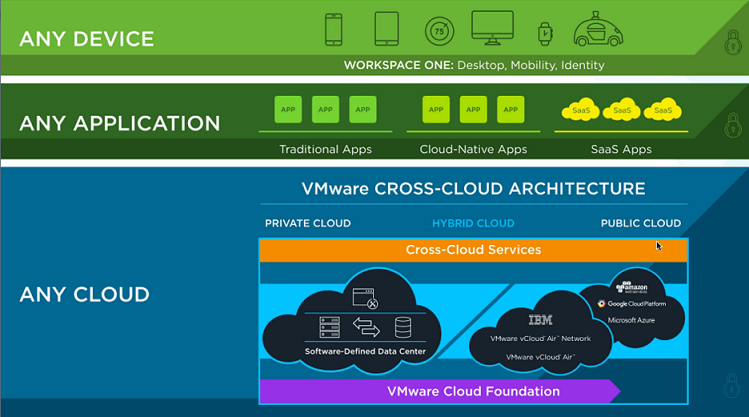
VMware Cloud Foundation and AWS
Last Thursday the big news was made public: VMware is partnering up with AWS! AWS has become the second Cloud Foundation partner and offers massive geographical reach, huge datacenters, and a trusted almost unrivalled application stack. Now here is a potentially bright future for VMware Cloud Foundation.
What does this deal between VMW and AWS mean to us as potential customers?
Bearing in mind that what has been presented on Thursday is still subject to change, however the big lines seem to have been carved in stone already.
- We will be able to run vSphere on top of AWS hardware. Yes, you have read that right: This means that whatever vSphere infrastructure you build on top of AWS it will not be nested!

- The management layer will remain the same management layer you have gotten used to, vCenter. vCenter will remain the single pane of glass into your entire infrastructure: you local datacenter and your datacenter in the cloud running on AWS.
- This service will be sold and supported by VMware. VMware will take care of the patching and the maintenance of the infrastructure running on the cloud. Customers only have to consume.
- Resizing cluster will be as easy as putting a tick in a checkbox. The scalability is API driven and the API will make sure new hardware hosts will be added to your cluster. The cloud has become extensible at the freedom of your fingertips. There is no need to create a service ticket to install new hardware for you. This solution is really elastically scalable.
- Your management tools such as vCenter, PowerCLI, VRO are exactly the same tools and can be used to operate both environments.
- The network layer which is NSX is exactly the same one as in your datacenter making it easy to deploy micro segmentation across your hybrid cloud.
- Because AWS is the cloud partner, you can leverage the applications on offer by AWS to put to use in your environment.
So what will this potentially look like for clients?
Technically the product will exist out of the following components:
- A new service portal from where you can create and manage your cloud objects such as hosts, clusters and VMs.
- The cloud datacenter itself are the components of Cloud Foundation running on AWS.
- The Amazon cloud itself.
- The Cloud Foundation service package which is offered and supported by VMware.
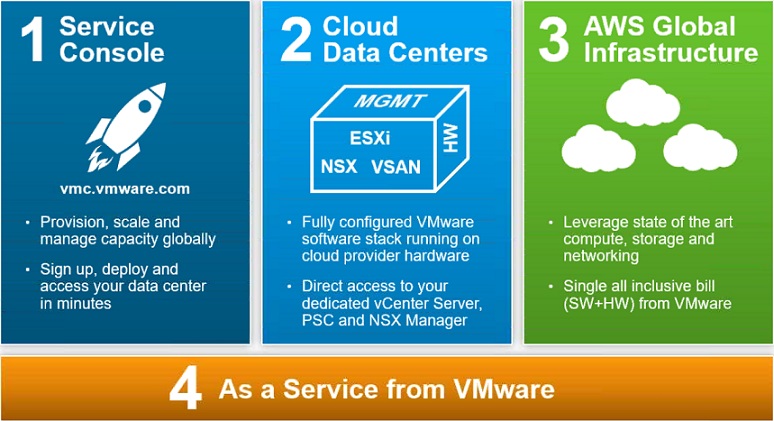
No doubt there will be more presentations available after VMworld Barcelona but let me give you a few examples of user interfaces as they can be seen at the moment for the people at VMware. Bear in mind that the beta is yet to be released.
The service Console:
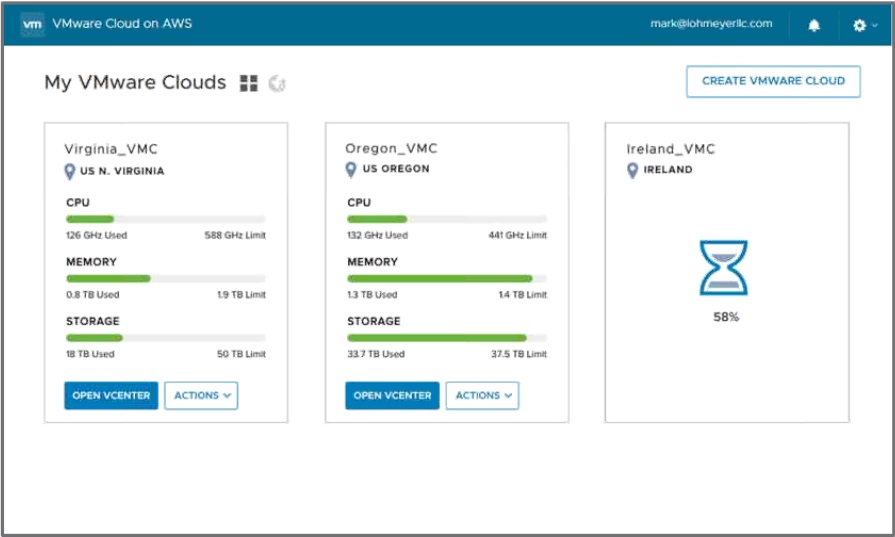
The vSphere web client:
You can see and manage both datacenters using the Enhanced Linked Mode: a cloud datacenter (AWS) and your On-Prem datacenter.
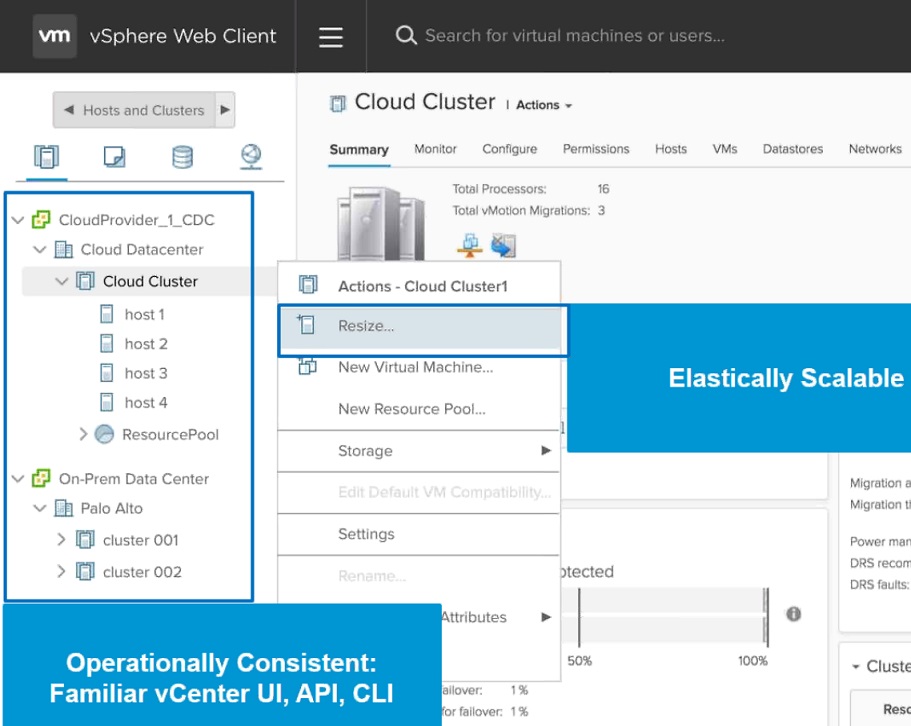
Conclusion
I have a confession to make. Until AzureStack (*) was announced this year, I saw no reason to promote and advocate a hybrid cloud datacenter model to my employer. Afterall for our vSphere workloads I saw no easy solution to move them to and back from the cloud and converting the whole datacenter to Hyper-V is not an option. However it did open a door to start thinking about the hybrid cloud.
Now with the announcement of the partnership between VMware and AWS I have to admit I am convinced that an easily manageable elastic hybrid cloud where you can move vSphere workloads between on premises datacenters and cloud datacenters is a a real possibility.
(*) AzureStack as you all know, will allow you to stretch your datacenter into the Azure cloud running the same hypervisor. Of course that will only apply to Hyper-V and Azure workloads and not vSphere workloads.
All pictures have been taken from the EAP blogger sessions and have been posted with the consent of VMware.

Hi there Kim! Just a quick question. How did you get access to the Early Access Program blogger sessions? I’ve been a official blogger for VMworld USA and didn’t get any EA. I’m just curious! Thanks!
Hey Homelaber,
How are you?
I think VMware invited only the bloggers who were attending the VMWorld Barcelona event.
Kim